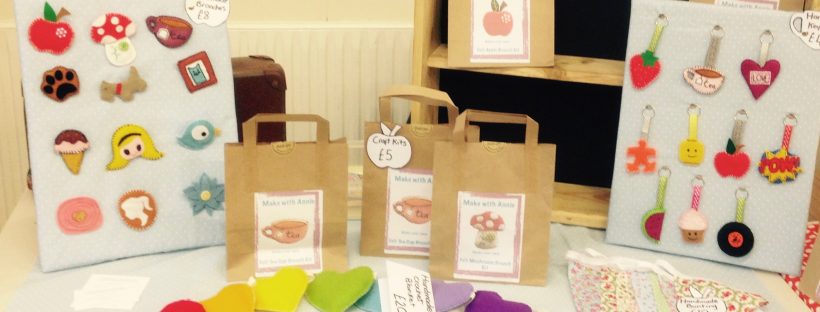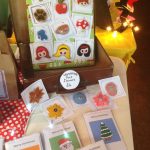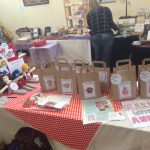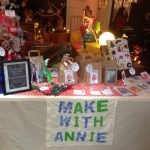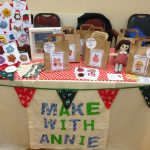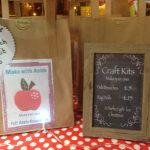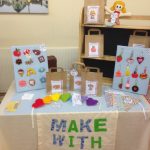A craft market day always starts early for a crafter. While its dark outside and the rest of your family sleeps, you’re getting ready and packing your wares ready to see what the day will bring.
Each crafter approaches working a craft market differently, but if you’ve never done one before here are my top tips to help you.
Packing your things at home
Its always best to try and pack everything the night before your heading out to a craft market, this might mean just gathering your pieces of jewellery or it might involve a much bigger manovering of products. Either way i would always suggest that you make sure your have everything your need for the following day and get it all in a nice position ready to take out to the car the following morning.
I am lucky enough that most of my craft products fit inside my holiday suitcase, which makes transportation nice and easy, but thats just because my Make with Annie craft kits and brooches are really small items.
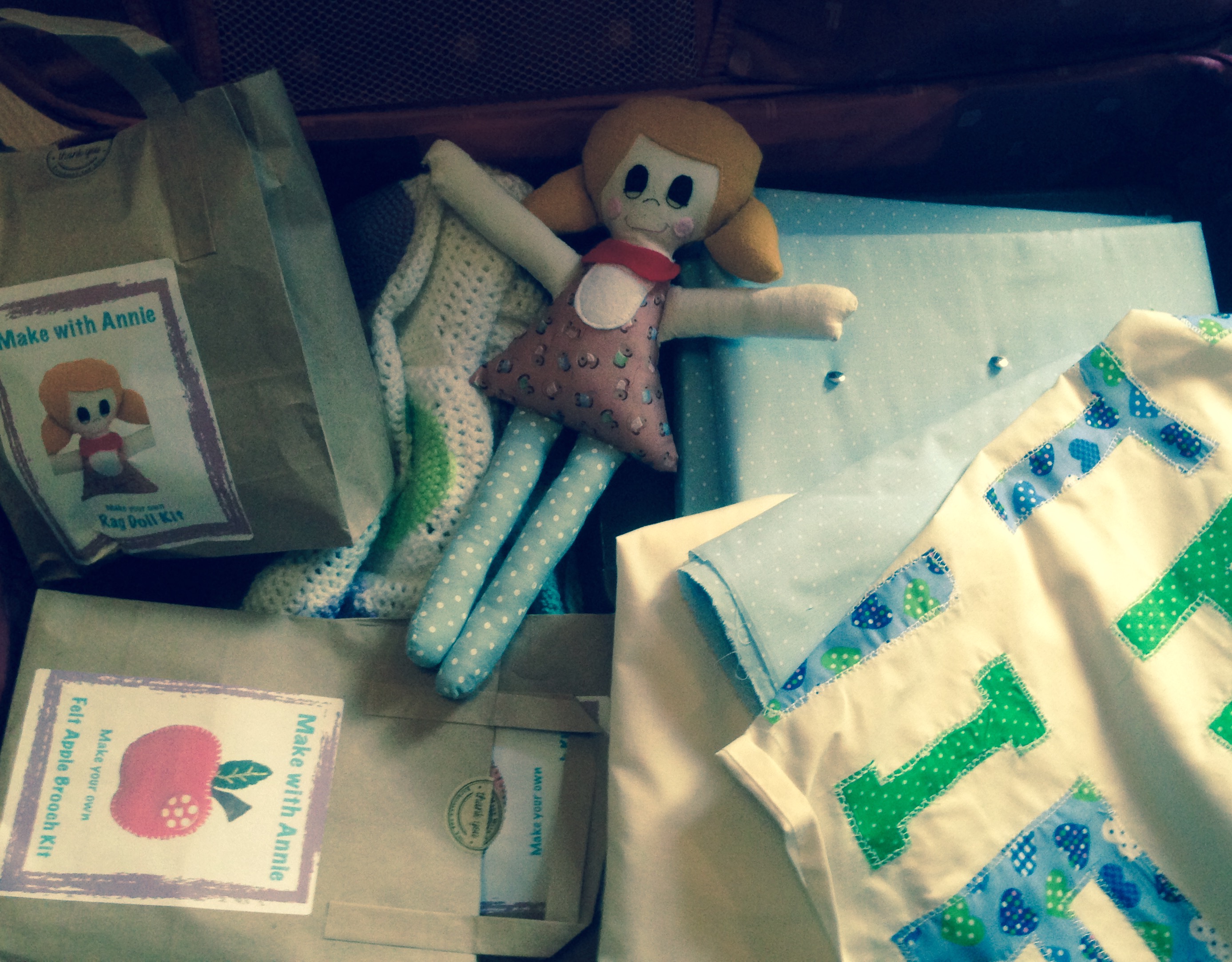
Apart from your products there are other things you need to make sure is all ready;
- Float – make sure that you have a nice float ready to take with you, full of change. I sell most of my products for round figures (£5, £15, £8) which means that I make sure I have lots of five pound notes and pound coins
- Table cloth – your display table will always look so much nicer if you cover it with a table cloth. I use an old cream single bed sheet that I picked up from a charity shop and some fabric to cover my table to make it in keeping with the Make with Annie theme I have on my social media and online shop.
- Decorations – Do you want to draw more attention to your stall with something decorative? Many jewellers have bust to display necklaces, or perhaps you sell headgear and perhaps you could use a polystyrene head to show off your products.
- Signs – Its advisable to have a sign to show customers who you are, it can be ready made from a printing company or it can be hand made. I made my own sign by cutting out the Make with Annie letters from some fabric and appliquéing it to a piece of cream cotton. Other stall holders use bunting.
- Pricing – ensuring that your items are clearly priced means the customers can see what your are asking for a product and decide if thats something that can afford before they ask you. Make sure you have clear price labels that are easy to read and see.
- Display – Your display depends on what products your are selling. Some people like to have shelves to give the stall a sense of height, or a board to show off some art work. Have a think about what your selling and how you want to display it, and we will look at this further later on.
- Business cards – so important, as sometimes people love what your doing but don’t need or want to buy it that day, but if they have a way to connect to your Facebook or website in the future then this could lead to sales further down the line.
- Note books – I have two note books with me at all markets. One is used to write down any sales, so that i can keep an eye on stock and finances and the other is for notes, ideas, emails, and commissioned work!
- Thermos Flask – teas and coffees can add up over a day, so invest in a large thermos and fill it to the brim to save some pennies.
Arriving at the market
I always like to arrive at the market or fair nice and early. Most markets if they start at 10am will open their doors at 8am for traders to get in and start setting up their stall. When your arrive for your first market the host will usual be looking out for any newcomers and be there ready to guide you as to what you are doing and point you in the right direction. If they supply the tables they will often have already decided who as which table, and if your bringing your own they will know where they want you to set up.
Setting out your stall
It’s always advisable to have your stall layout arranged before you get to your first craft fair, but be prepared to have to change it depending on the space you’re given. So have a few adaptable ideas and plans in mind.
When I reached my first market I hadn’t thought about it and I was in a centre position which meant that my stall needed to be accessible from two sides, which was something I have never considered. I can assure you that after that first day I spent a little time coming up with plans.
Below is an example of how I plan out my stall in a notebook that I take with me to the markets.
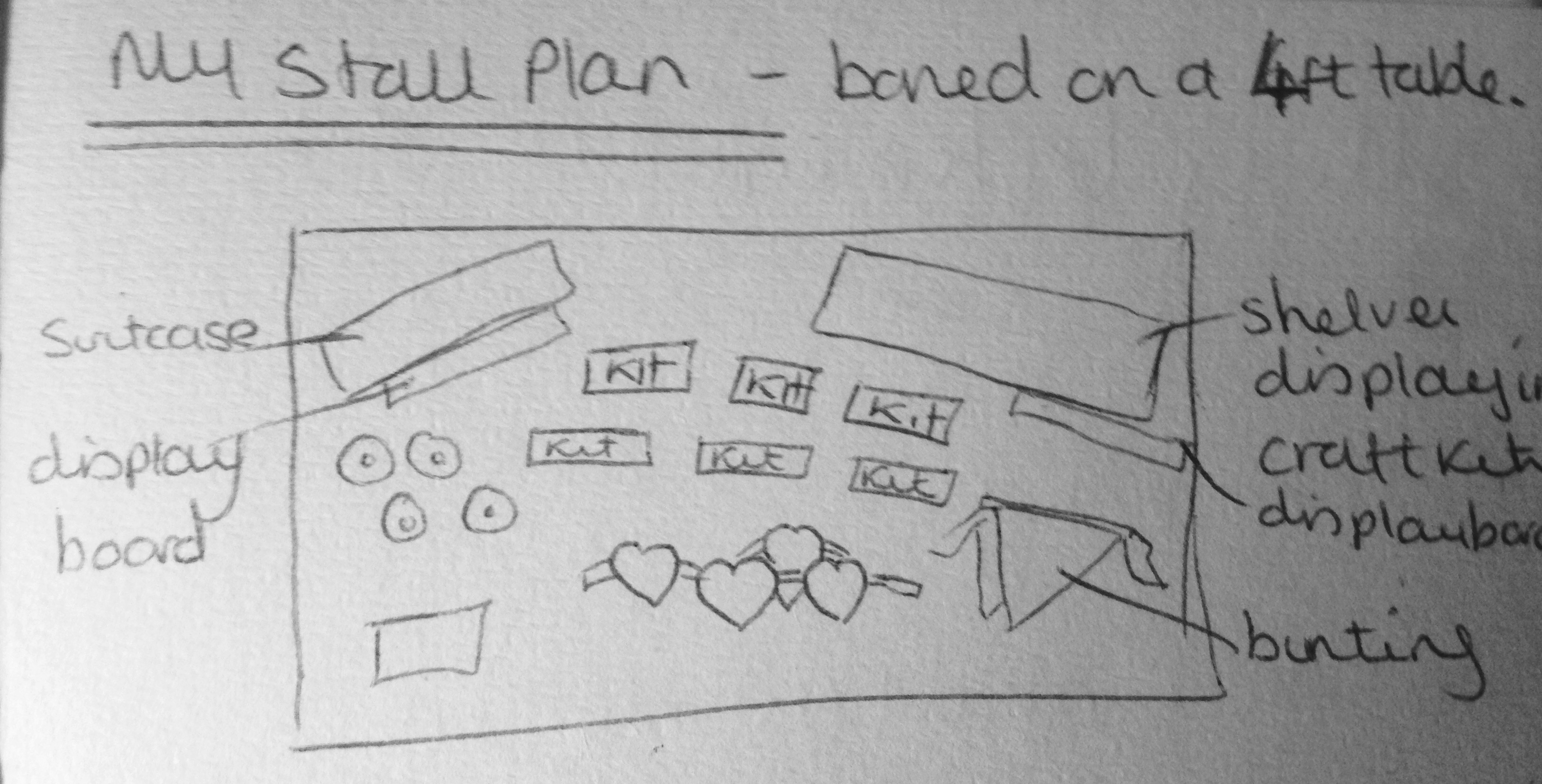
I also take photos of every single set up I do, so that I can always reference back to them, as often things change and your thinking oh what did i do that time at so and so.
Get to know the other stall holders
Have a cup of tea before the customers start to arrive and a chat with your neighbours. Have a look at what the stalls around you are selling and network, swap business cards and make friends.
I have only been working craft markets since since October 2015, thats just four months ago, but have made some brilliant friends through this work. And not only that, but its great to have someone to watch your stall when you need to pop for a ‘comfort break’!
Greeting customers
The market opens and the customers start to trickle through the doors (or race through them we all hope) and your stood or sat? Whats the best way to greet them? You need to find your own way and soon your will slip into something that forms your own technique, but be alert. If the market is deadly quiet (raining January days!!) then its nice to have something to do to use the time your their wisely, or to be chatting to your neighbour, but once a customer comes into the building or stands at your stall, greet them. Stop what your doing and smile and say hello, ask them about their day, or the weather, tell them something about the product they are looking at.
I have a friend – Sew Watt – who greets all her customers with a smile and tells them that all their products are made from recycled skateboards! This immediately draws people to take a second look at what it is she had created, and often leads to a sale due to the uniqueness of the product. So think if you have something like this that you can work into your patter.
Some people say you should always be stood, but this can get exhausting, and if like me you have a disability then its not always practical, so don’t worry about that. If you are sat make sure all your attention is on the customer, judge to see if they are a chatter or would rather be left alone and take the conversation where it goes. The other day I had a ten minute chat with a lady who is learning to crochet about techniques, and even though she didn’t buy anything from me that day, she will remember that I was polite and kind and nice to talk to – and she will remember my products!!
Selling your products
Everyone has a different sales patter and its up to you to find your own, and keep trying different things to see what works. Perhaps you have a unique item that you can use like my friend I mentioned above. Or perhaps your a little shyer and would rather just chat with the customer, (this is my preferred method) I like to try and engage the customer in a short conversation, if they are amenable to this.
Here is a concise but handy little do and don’t list of things to remember when it comes to selling:
- Don’t be pushy – engage the customer with some conversation but don’t start pushing your products on them.
- Don’t be critical about your products – if a customer says something nice about your product, be gracious and just say ‘oh thank you very much, thats so kind of you to say’, then perhaps tell them more about the product, and not ‘Oh really, thats not my favourite’ or ‘Well I just brought it along and thought someone would buy it’.
- Smile – no one wants to talk to a grumpy crafter 🙂
- Don’t gossip about other crafters or customers in front of customers – this looks negative and nasty
- Dress up – I’m not talking full on fancy dress, but if you sell vintage clothes or homewares then dress in your best vintage outfit.
Time to go home
Take your time when packing your products away, the neater you pack them away the easier it is to get them out again. Sometimes if your working more than once market a weekend or doing a few days in a row, you need your things to stay packed away overnight and wont have time to get everything out and sort through it before your heading off to your next market. So make sure that you take a little extra time to pack your things away carefully and to make sure you haven’t left anything. Its also respectful to clear away any rubbish your have and place it in the bin and to clear away any extra tables or chairs you may have borrowed back to where you found them.
Accounts
If you are a good craft market seller you will go home and immediately enter your outgoings and incomings for the market you have just done in your bookkeeping accounts! This is probably the one bit of advice I wish i had been given when I started, as I had no idea how much I was spending or how much profit I had made until christmas and then was so disappointed that it was not as much as I had thought!
We spend so easily and forget the small amounts, like the bacon butty we had when we first arrived at the market! Or the six cups of tea we bought! These are all eating into our profits!
So get a spreadsheet or a notebook and start making note of this after each market and keep on top of escalating outgoings taking away from your profit.
Useful Links
How to sell at Craft Fairs – create.net
15 Tips to increase your craft show sales – indiefixx.com
How to sell in person – Folksy.com
Happy Crafting!
